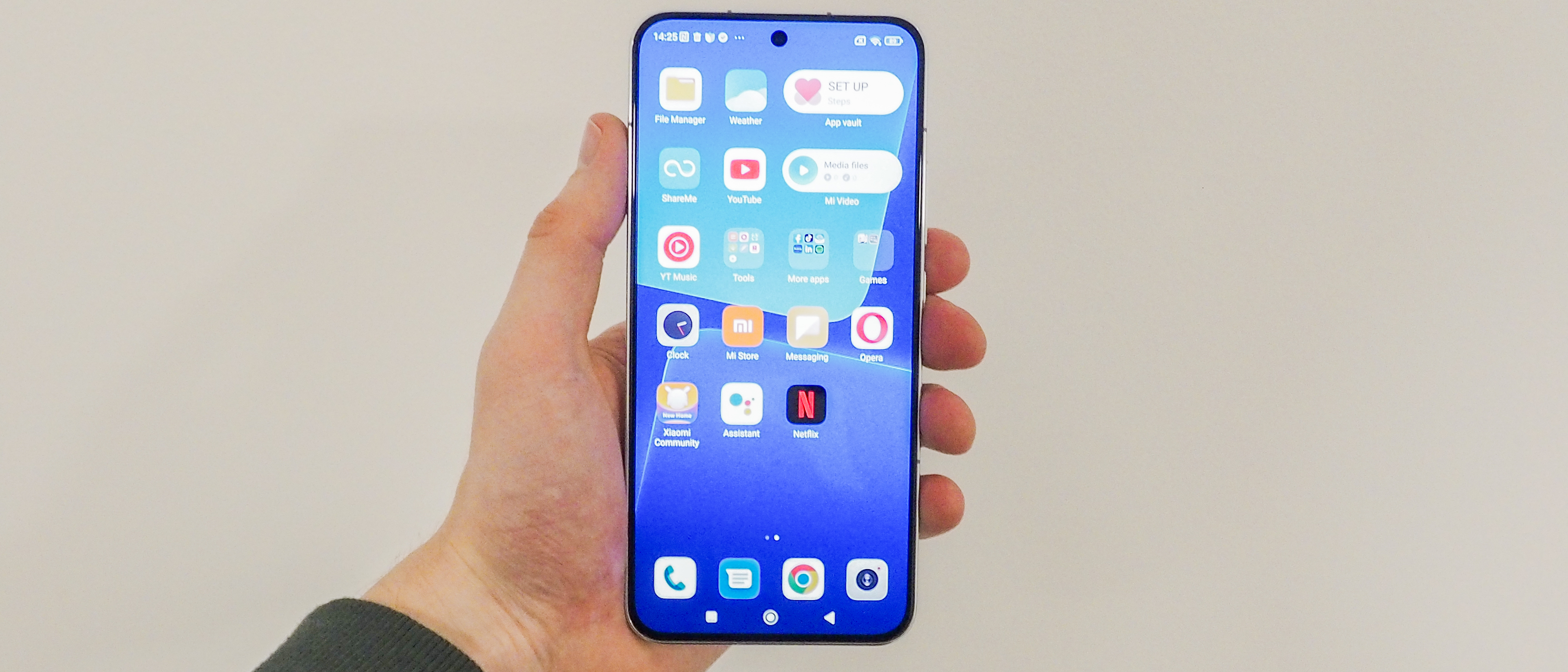TechRadar Verdict
Boasting an exceptionally bright display, phenomenal performance and a handsome (albeit unoriginal) straight-edged design, the Xiaomi 13 is an impressive Android flagship that deserves a much wider market.
Pros
- +
Smart-looking design
- +
Impressively bright display
- +
Speedy Snapdragon 8 Gen 2 processor
Cons
- -
No US availability
- -
Memory options vary by region
Why you can trust TechRadar
Xiaomi 13: Two-minute review
The Xiaomi 13 arrives as the successor to the company’s 2022 flagship – the Xiaomi 12 – and stays true to its predecessor’s philosophy: premium performance in a compact package.
Beyond a marginal size increase, the phone’s display is largely unchanged, but Xiaomi’s knack for brightness and vivid colors is here delivered in a much sleeker, almost iPhone-like body, which lands the Xiaomi 13 in the ‘handsome’ camp of today’s best Android phones.
Granted, the Xiaomi 13 offers almost no originality on the design front beyond its Leica-branded camera setup (more on this below), but if, like me, you’re a sucker for Apple’s straight-sided aesthetic, then this phone’s unashamed resemblance to the best iPhones is a positive rather than a negative.
The Xiaomi 13’s impressive speeds are made possible by Qualcomm's Snapdragon 8 Gen 2 chipset – similar to the processor you’ll find powering Samsung’s newly-released Samsung Galaxy S23 line – and the device is offered in two memory variations: 8GB or 12GB of LPDDR5X RAM, paired with 256GB of UFS 4.0 storage (though, if you’re in the UK, you’re looking at the 8GB version only).
The phone’s 4,500mAh battery remains unchanged from the Xiaomi 12 – meaning you still get at least one whole day’s juice on a single charge – and the latter’s 67W wired charging, 50W wireless charging and 10W reverse wireless charging capabilities are carried over, too.
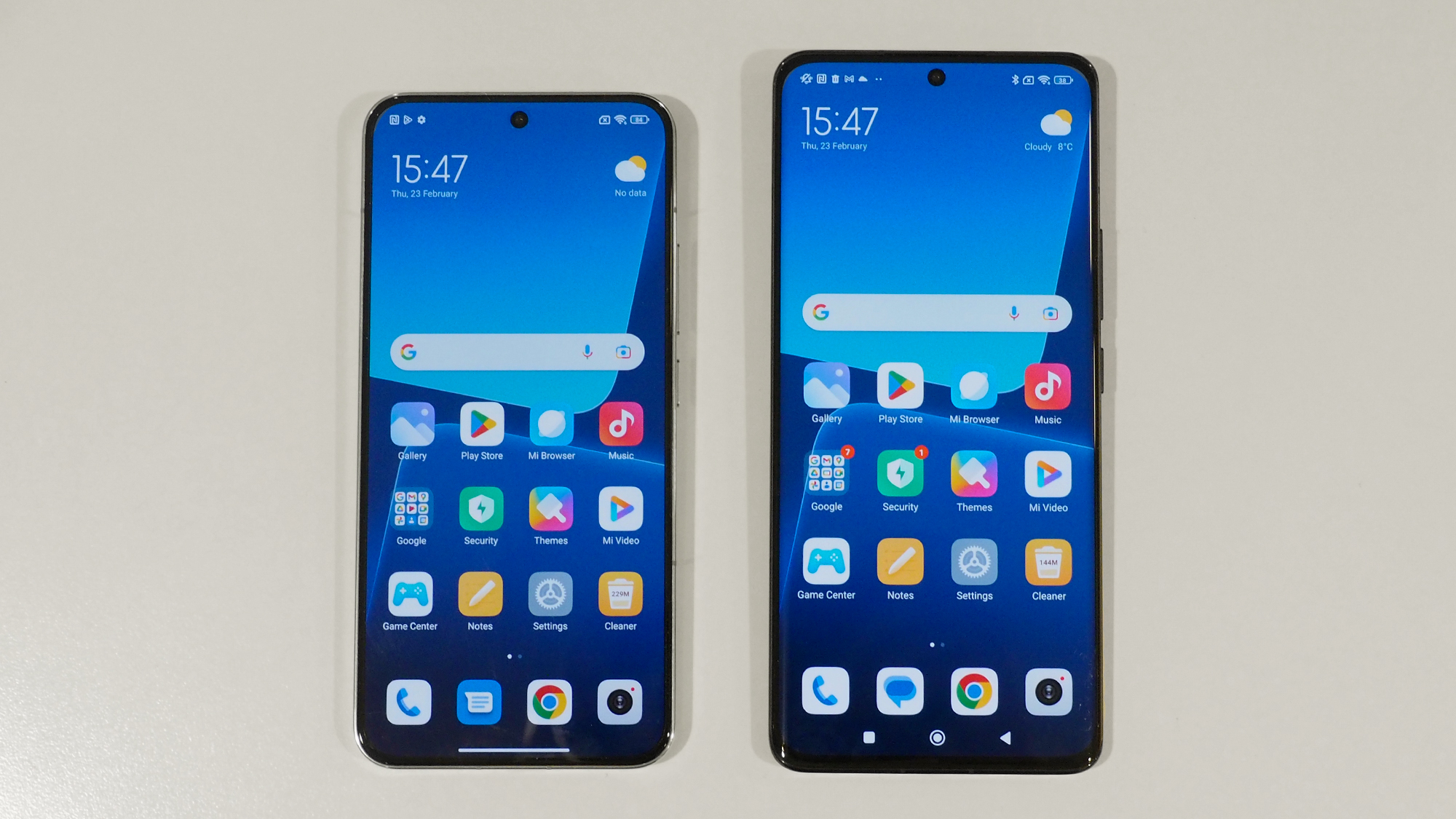
On paper, the biggest difference between the Xiaomi 13 and its predecessor is the former’s Leica-branded camera array. Comprising a 50MP f/1.8 main shooter with OIS (optical image stabilization), a 10MP f/2.0 telephoto camera with 3.2x optical zoom, and a 12MP f/2.2 ultrawide sensor, the Xiaomi 13’s camera setup makes the phone a much more versatile beast for photographers; primarily because Xiaomi’s Leica partnership allows for two distinct shooting modes: Vibrant and Authentic. The former makes colors look brighter and more saturated, while the latter replicates the original Leica look by encouraging bolder contrast and a greater dynamic range, which proves a nice differentiator between this and other Android phones.
If you’re looking for one of the very best camera phones, though, the Xiaomi 13 still doesn’t hold a candle to the photography performance offered by its Pro-grade sibling – the Xiaomi 13 Pro – or the Samsung Galaxy S23 Ultra and iPhone 14 Pro.
Sign up for breaking news, reviews, opinion, top tech deals, and more.
The bottom line is this: the Xiaomi 13 is an excellent flagship option for Android fans with a soft spot for Apple’s design philosophy. It doesn’t beat the competition in any one area, but Xiaomi’s latest premium offering still delivers almost everything you could want from a smartphone to an extremely high standard.
For those looking to spend a little more money, our hands-on Xiaomi 13 Pro review may shed some light on whether the jump up to Xiaomi’s even-more premium photography-focused handset is worth it.
Xiaomi 13 review: Price and availability
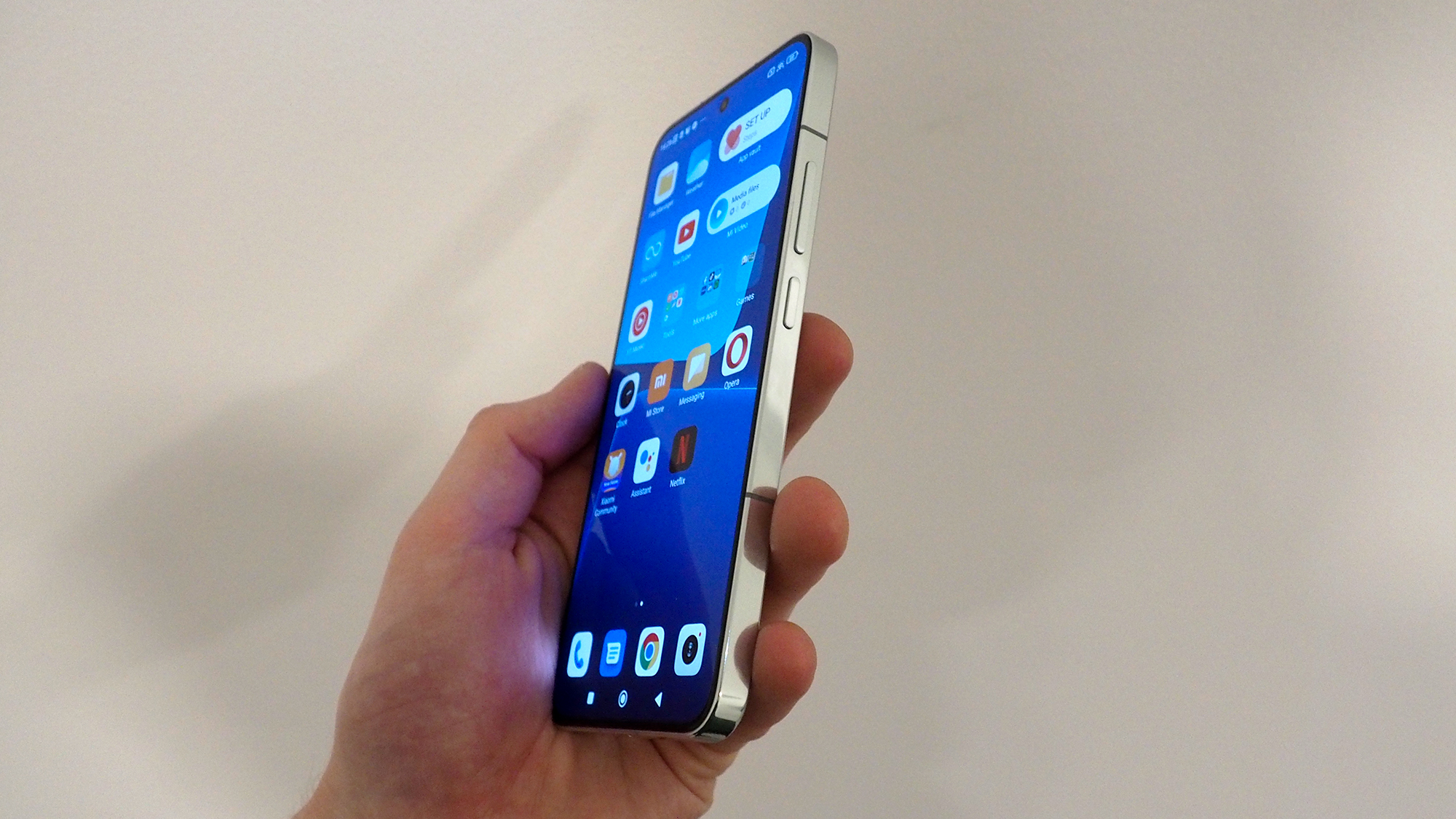
- Costs £849 (approximately $1,015 / AU$1,510) in the UK
- Faster RAM for the money versus Xiaomi 12
- Not available in the US or Australia
The Xiaomi 13 was first announced alongside the Xiaomi 13 Pro in China on December 11, but both devices launched globally on February 26 at MWC in Barcelona, before going on sale from March 14.
The phone is available to buy in the UK for £849 (approximately $1,015 / AU$1,510) from either Xiaomi or one of its official retail partners; which include Currys and Argos. However, the Xiaomi 13 isn’t available in the US or Australia, as neither is a key international market for the company.
In the UK, the Xiaomi 13 is only available in black and comes with 8GB of RAM and 256GB of storage, despite multiple memory configurations being made available in China and elsewhere (128GB, 256GB or 512GB – with 8GB RAM offered on the 128GB model and 12GB RAM on the 512GB model).
The phone’s £849 price is £100 more than its predecessor's equivalent, but the base Xiaomi 12 sported only 128GB of storage. As such, you're actually paying the same price as last year's 256GB Xiaomi 12, but both storage and RAM are faster and more power efficient on this year's model.
It’s also worth taking the Xiaomi 13’s competitor prices into consideration. This phone costs the same as the base iPhone 14, Samsung Galaxy S23 and Google Pixel 7 Pro, and although all three devices are similar in terms of specs, the Xiaomi 13’s MIUI 14 interface is definitely the more acquired taste of the trio’s respective softwares.
- Value score: 4 / 5
Xiaomi 13 review: Specs
As mentioned above, the UK version of the Xiaomi 13 comes in a single memory variant – 8GB of RAM with 256GB of storage.
| Header Cell - Column 1 | |
|---|---|
| Dimensions: | 71.5 x 152.8 x 8 mm |
| Weight: | 185g / 189g |
| OS: | Android 13 with MIUI 14 |
| Screen size: | 6.36 inches |
| Resolution: | 1080 × 2400 pixels |
| CPU: | Qualcomm Snapdragon 8 Gen 2 |
| RAM | 8GB / 12GB (region-dependent) |
| Storage: | 256GB |
| Rear Cameras: | 50MP (wide), 10MP (telephoto), 12MP (ultrawide) |
| Front Camera: | 32MP |
| Battery: | 4,500mAh |
Xiaomi 13 review: Design
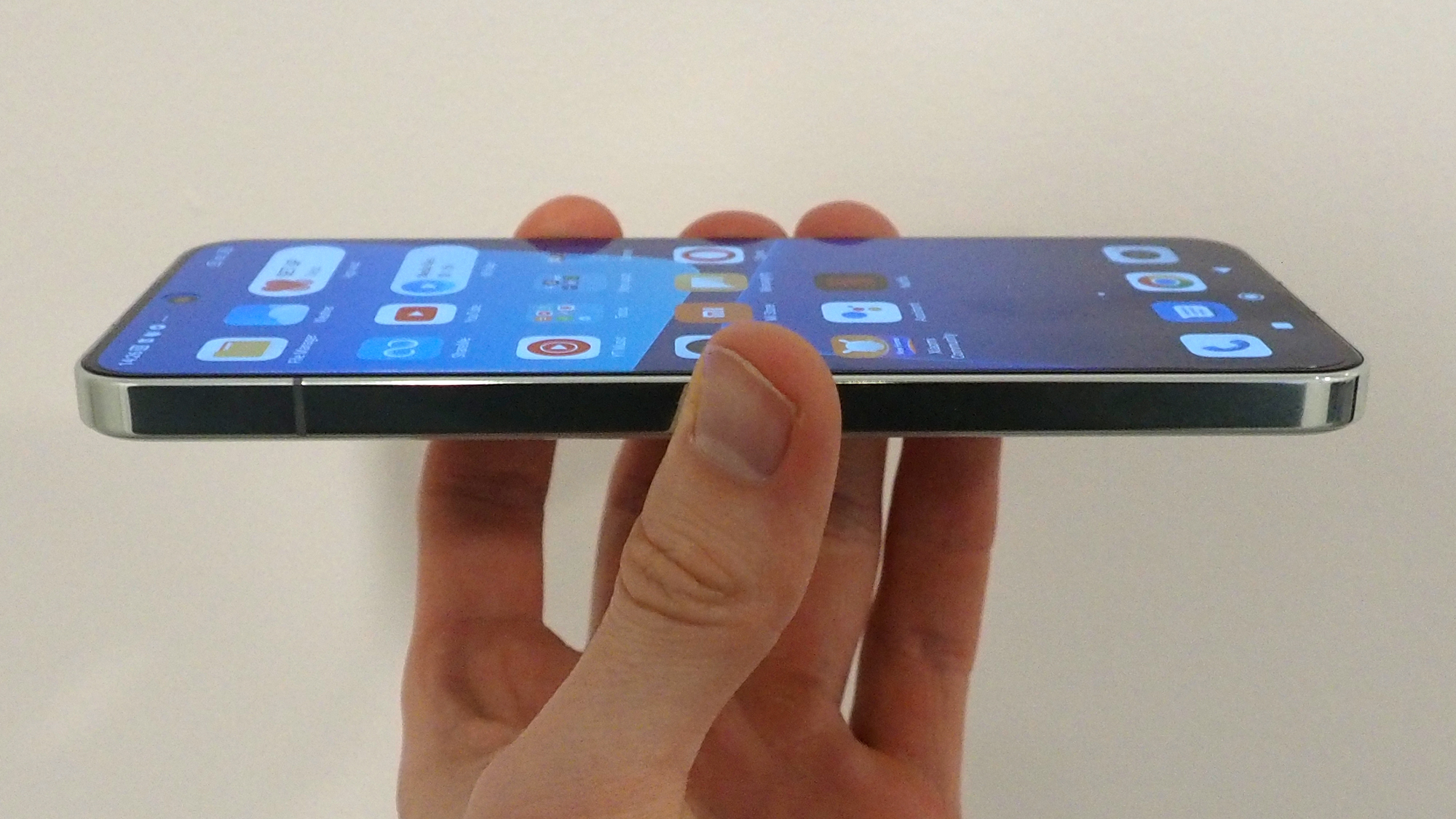
- iPhone 14-like straight-sided design is a great size
- Corning Gorilla Glass Victus protection
- Nice color options internationally
Xiaomi has opted for a decidedly iPhone 14-like design with the Xiaomi 13, which is by no means a criticism (if you’re an iPhone fan, that is).
Coming in at 71.5 x 152.8 x 8mm and weighing 185g, the phone sports a glossy, straight-edged aluminum body that’s more conservative than boundary-pushing, but it feels great in the hand, and its size – for me, at least – hits a rare sweet spot between being comfortable to navigate and large enough to look impressive. For reference, the Xiaomi 13 sits halfway between the Samsung Galaxy S23 and Samsung Galaxy S23 Plus (and therefore the S22 and S22 Plus) in terms of size, almost to the millimeter.
Internationally, the Xiaomi 13 is available in three standard colors: black, white and Flora Green. In China, the company has also produced a gray and a light blue version, as well as limited edition iterations in more eye-catching red, green, yellow and blue finishes. As mentioned, though, the phone is only available in black in the UK.
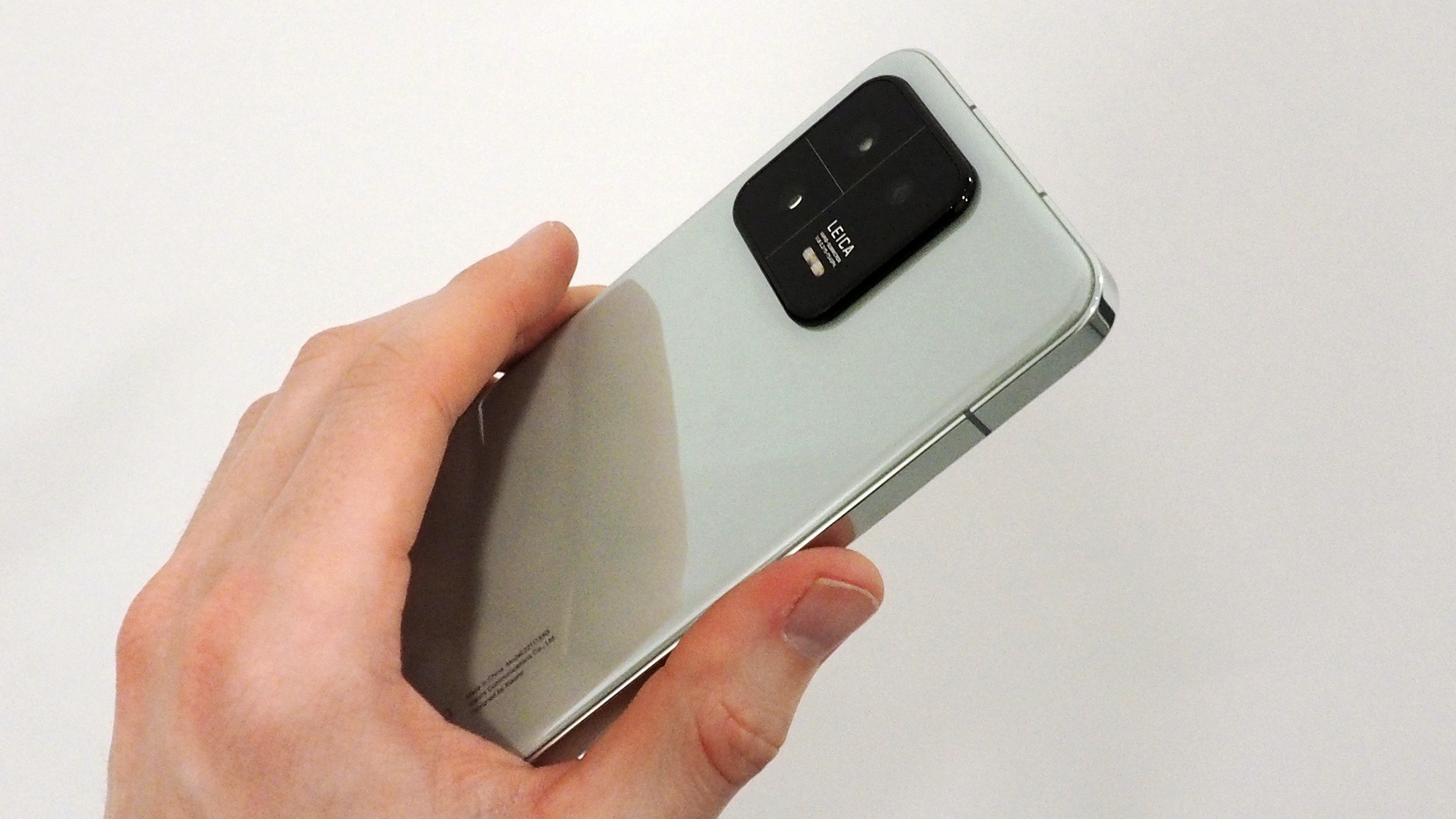
Every variant comes with a glass back, save for the vegan leather-equipped light blue model which – for obvious reasons – weighs a little more than the rest (you’re looking at 189g rather than 185g). My Flora Green model looks great, with the visible divisions between the rear camera sensors (more on these later) a particularly nice touch, in my opinion.
The phone’s glass back may seem a little glossy to some, but the good news is that the Xiaomi 13 doesn’t feel like a device that’ll smash into a million pieces if you drop it. It is an absolute fingerprint magnet, mind you, which may frustrate UK customers who aren’t able to buy the leather-clad version of the phone.
As we’ve come to expect from handsets in this price range, the Xiaomi 13 also boasts an IP68 rating for dust and water resistance. This sort of thing is a little hard to test, but I did use the phone under a light sprinkling of shower water without any problems.
- Design score: 4.5 / 5
Xiaomi 13 review: Display
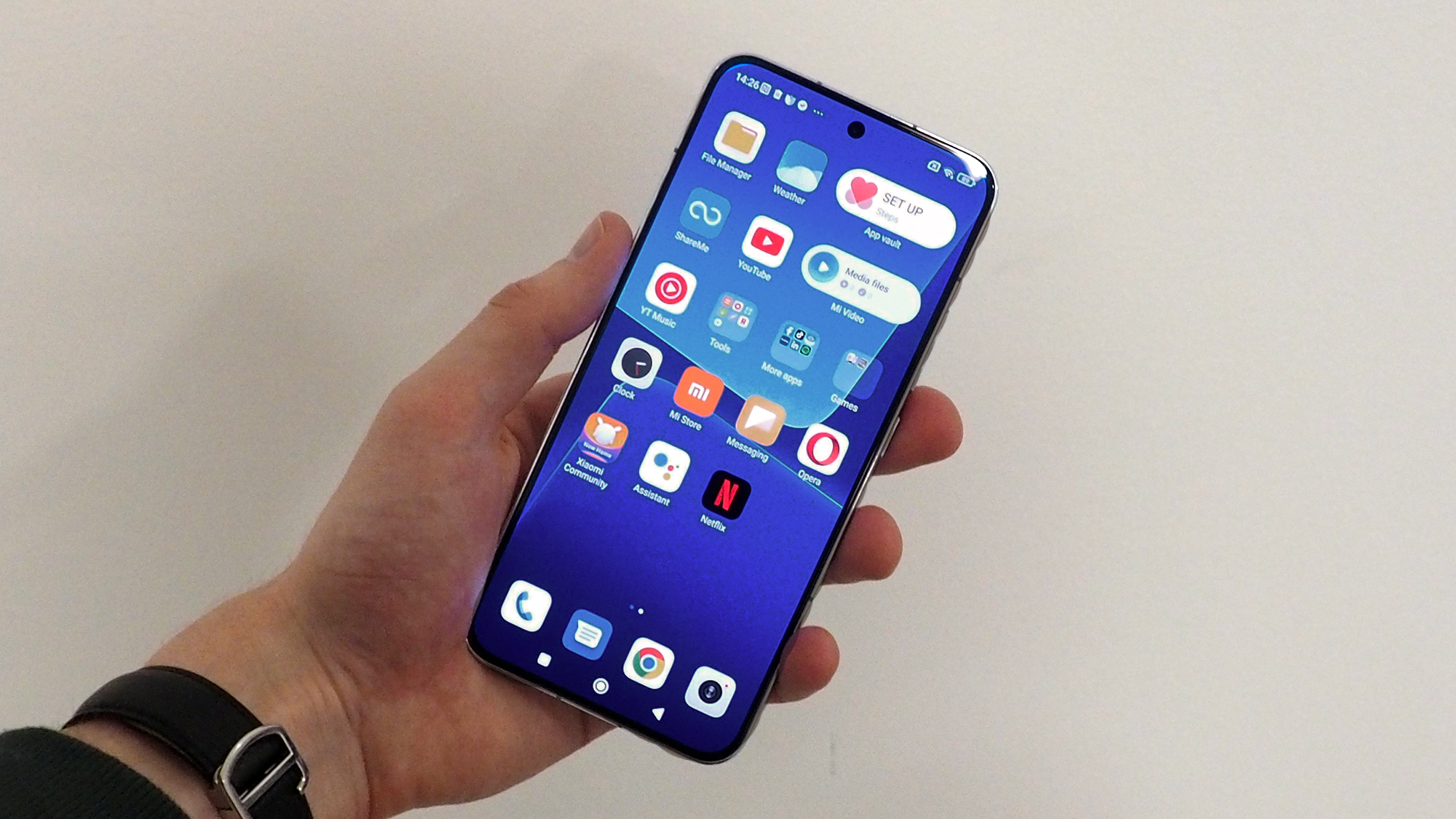
- 6.36-inch E6 OLED display is suitably bright
- Gorilla Glass 5 front
- Slightly larger display compared to predecessor
The Xiaomi 13’s 6.36-inch OLED display is a touch bigger than its predecessor’s, though the phone’s 1080 x 2400 resolution, 120Hz refresh rate and support for a range of HDR standards are in keeping with the Xiaomi 12.
Like the 12, you’re also getting a flat screen with a punch-hole camera at the top, and the bezels are similarly (and thankfully) small.
In my time with the Xiaomi 13, I found the phone to be exceptionally bright and responsive, with its 120Hz refresh rate making motion (from gaming or scrolling through social media) a smooth experience.
A peak brightness of 1,900nits means the Xiaomi 13’s display is sufficiently visible whether you’re indoors or in direct sunlight, too (though, being in London, most of my testing took place under gray skies *sigh*). This also marks a significant bump over its predecessor’s display, which topped out at 1,100nits.
- Display score: 4 / 5
Xiaomi 13 review: Cameras
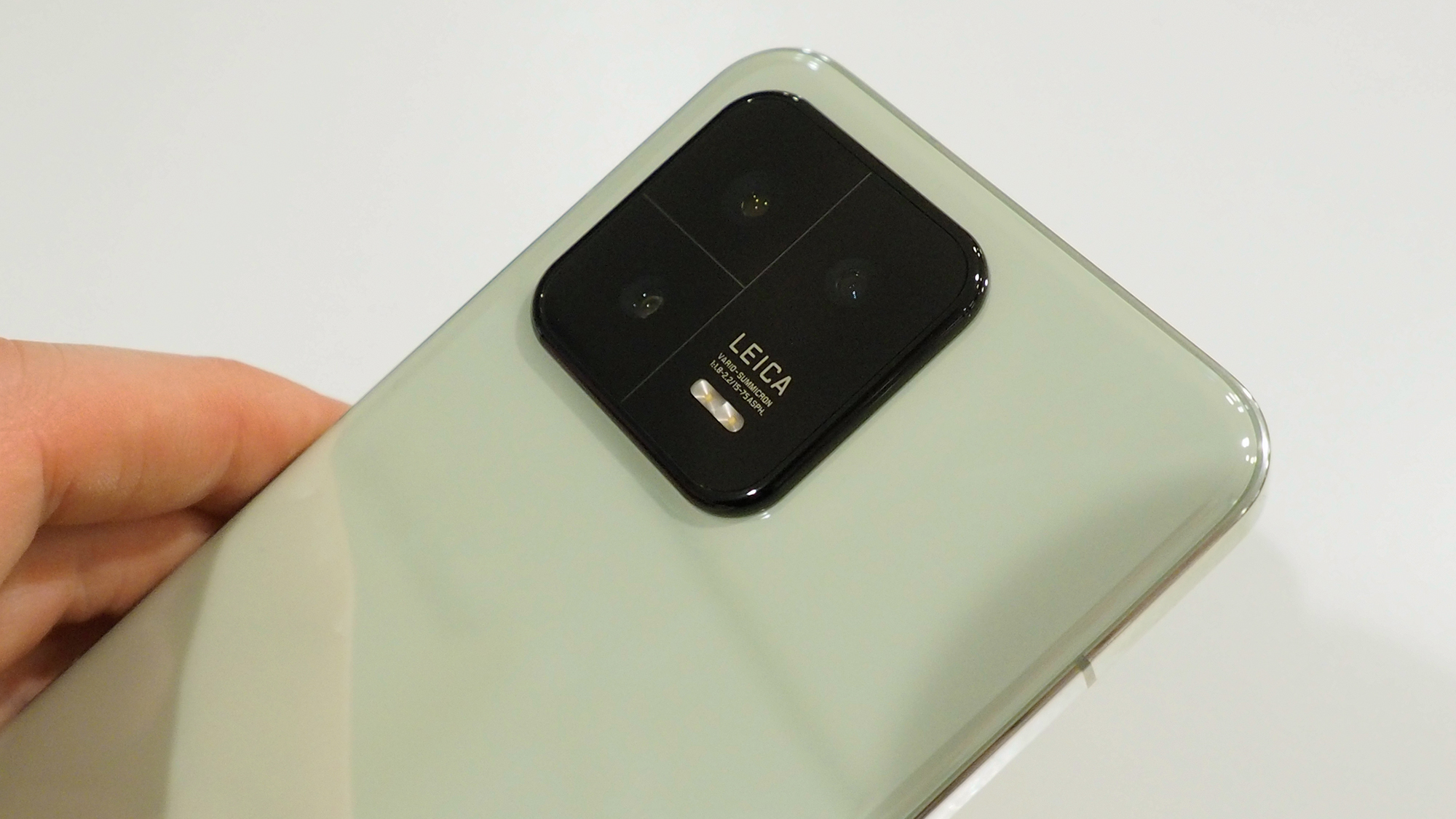
- Smart-looking Leica-branded triple rear camera setup
- 3.2x 10MP f/2.0 telephoto lens w/ OIS
- Strong 50MP main sensor
The Xiaomi 13 boasts a Leica-branded triple rear camera setup consisting of a 50MP f/1.8 main shooter with OIS, a 10MP f/2.0 telephoto camera with 3.2x optical zoom and OIS, and a 12MP f/2.2 ultrawide sensor.
The latter camera represents the biggest difference between the Xiaomi 13 and its predecessor, which limped along with an underwhelming 5MP ‘telemacro’ sensor. Xiaomi’s partnership with Leica has also brought with it an ALD lens coating that reduces reflectivity and thus improves image clarity, collectively rendering the overall appearance of the phone’s camera setup much smarter than that of the Xiaomi 12.

In practice, the Xiaomi 13’s 50MP main lens delivers exactly the sort of strong photographic performance you’d expect from a phone of this caliber: vibrant colors, impressive contrast and plenty of detail. Unlike with the Xiaomi 12, the phone doesn’t overdo things when it comes to AI-powered image optimization, with saturation much more balanced this time around, too.


Xiaomi’s partnership with Leica brings two shooting modes to the Xiaomi 13: Vibrant and Authentic. The former makes colors look brighter and more saturated, while the latter is meant to replicate the original Leica aesthetic by encouraging bolder contrast and a greater dynamic range. Vibrant mode is enabled by default, and I preferred the results offered by this mode over Authentic – particularly for night shots that feature a range of colors.






The Xiaomi 13’s telephoto camera has a 3.2x optical zoom range, and snaps of faraway objects remain colorful and clear until the phone’s digital zoom kicks in (which extends up to 30x at the expense of image quality). Having tested the cameras on the Samsung Galaxy S23 Plus – which shares its sensor setup with the standard Galaxy S23 – I’d say that the Xiaomi 13 delivers slightly better digital zoom results (though neither phone can compete with their Pro-grade counterparts when it comes to image quality).





On the video front, the Xiaomi 13 can shoot in up to 8K quality at 24fps, and it also sticks with its predecessor’s 32MP selfie camera (though adds a slightly wider f/2.0 aperture).
- Cameras score: 4 / 5
Xiaomi 13 review: Performance and audio

- Speedy Qualcomm Snapdragon 8 Gen 2 chipset
- WiFi 7
- Powerful Dolby Atmos speakers
The Xiaomi 13 packs the best mobile SoC Qualcomm has to offer right now in 2023: the Snapdragon 8 Gen 2. There’s no bespoke version of the chipset here (which you’ll find in Samsung’s Galaxy S23 line), but from a practical point of view, the Xiaomi 13 still boasts the fastest silicon around (the Xiaomi 13 Pro uses the same processor, too). In fact, the phone’s Geekbench 6 scores were almost identical to those of the Samsung Galaxy S23 Plus, suggesting the difference between the two processors is negligible.
As mentioned in the display section of this review, the Xiaomi 13 has felt suitably speedy in my time spent with the device. Neither gaming nor general browsing has caused the phone to noticeably heat up, with FIFA Mobile – my usual benchmark test for mobile gaming – running as smoothly as could be hoped for on a mobile device.



The Xiaomi 13 is a 5G phone, so you’ll be able to connect to the faster mobile network if it’s offered where you live, but as with all phones, your speeds will depend more on your network and area than the phone you’re using. WiFi 7 is also an impressively new networking technology that – if you can connect to a compatible network – will support up to 3.6Gbps.
I was pleasantly surprised with the Xiaomi 13’s audio credentials, too. I’m not one for playing music or videos out loud, but the phone’s Dolby Atmos-tuned dual speakers are exceptionally loud and bass-rich – even if they don’t provide a true spatial audio experience.
- Performance score: 5 / 5
Xiaomi 13 review: Software

- Runs MIUI 14 on top of Android 13
- 3 years OS updates + 5 years security updates
The Xiaomi 13 runs Android 13 with Xiaomi’s MIUI 14 interface, which will be familiar to anyone who’s ever used a Xiaomi phone.
Personally, I find Xiaomi's default preference for three-button navigation at the bottom of the screen annoying, so I immediately switched my device over to gesture-based navigation (which, yes, made the experience of using the device decidedly more iPhone-like).
MIUI does have its perks over the stock Android experience. Floating apps and the range of vibrant wallpapers are great, and the left/right separation of top-screen menus (one for notifications, one for quick settings) keeps clutter to a minimum on the Xiaomi 13 (again, this is particularly iPhone-like – can you tell I use an iPhone in the day-to-day?).
I also like the sidebar options available when watching videos (see below), and Xiaomi’s trademark charging and notification graphics are cool as ever.

There are only a handful of pre-loaded apps – some of them annoying (Booking.com), some of them useful (YouTube) – but downloading your favorites from the Google Play store is as quick and easy as you’d expect, and the third-party bloatware is removable.
I didn’t experience any major bugs in my time spent testing the Xiaomi 13, though a handful of apps (including FIFA Mobile and Geekbench 6) did freeze up momentarily when I selected actions that required an internet connection (while not connected to the internet).
- Software score: 4 / 5
Xiaomi 13 review: Battery life

- 4,500mAh battery is the same capacity as predecessor
- 67W wired fast charging (charger in box)
The Xiaomi 13 has a 4,500mAh battery that supports 67W wired charging, 50W wireless charging and 10W reverse wireless charging. That’s the same battery tech as you’ll find in its predecessor, the Xiaomi 12, and will be plenty fast enough for most users.
In our tests using the phone’s 67W charger – which, mercifully, is included in the box (good job, Xiaomi!) – the Xiaomi 13 charged to 41% in 15 minutes, 78% in 30 minutes and 100% in 46 minutes.
With most of the phone’s the bells and whistles engaged – 120Hz refresh rate, auto brightness, several open apps and so on – the phone comfortably lasted a full day of relatively heavy use. If you’re someone who only lightly scrolls and sends a handful of messages each day, I’d say you’ll probably get two days from the Xiaomi 13, which is about the same as you can expect from the Galaxy S23, Galaxy S23 Plus and iPhone 14 under similar usage conditions.
I like to run a little streaming experiment when testing phones, and the Xiaomi 13 passed with flying colors. After booting up YouTube and streaming an entire two-hour film in 1080p at medium brightness, the phone’s battery had only drained 10%. In other words, you won’t need to fret about the Xiaomi 13’s charge when watching lengthy videos during a commute or long flight (though 4K streaming will, for obvious reasons, drain power at a faster rate).
- Battery life score: 4 / 5
Should you buy the Xiaomi 13?
Buy it if...
You want the Android experience in an iPhone-style package
The Xiaomi 13 is the most iPhone-like Xiaomi phone to date, but you’re still getting the Android 13 (underneath MIUI 14) experience.
You want a full-featured Android flagship that isn’t a Samsung
Despite not boasting the same camera credentials as its pricier sibling, the Xiaomi 13 will remain a top-tier handset for several years, thanks to its industry-leading processor and impressive display.
Don't buy it if...
You want the best camera phone
The Xiaomi 13’s camera setup is impressive, but it doesn’t come close to that of its Pro sibling. The latter’s formidable trio of 50MP sensors is worth the extra expense, if you’re someone who lives for mobile photography.
You’re not used to Xiaomi’s take on Android
Xiaomi’s MIUI 14 interface won’t be for everyone. If you’re someone who’s familiar and comfortable with the standard Android UI, we suggest taking a look at the phones in Samsung’s Galaxy S23 line.
Xiaomi 13 review: Also consider
Thanks to its formidable trio of 50MP sensors, the Xiaomi 13 Pro combines everything that's good about the standard Xiaomi 13 with next-level photographic performance.
We've made several references to the iPhone 14-like nature of the Xiaomi 13 throughout this review. If you're already a fan of Apple's iOS interface, we'd suggest sticking with the brand's latest vanilla flagship.
While we're big fans of Xiaomi's unique take on Android, the standard Galaxy S23 offers a more, well, standard Android experience.
How I tested the Xiaomi 13
- Review test period = 7 days
- Testing included = Everyday usage, web browsing, social media browsing, video streaming, gaming, photography
- Tools used = Geekbench 6, Geekbench ML, native Android stats
I lived with the Xiaomi 13 as my primary device for around a week, using it for productivity purposes during my working day and for social media browsing and gaming in the evenings.
As a football fan, I’ve grown used to the way FIFA Mobile plays on a few different devices, which helped me to quantify just how impressive the Xiaomi 13’s Snapdragon 8 Gen 2 processor is from a power perspective. I also used the phone to stream color-rich documentaries via YouTube and Netflix, and also logged into Twitter to assess the social media browsing experience.
I used the recently released Geekbench 6 for CPU testing (the Xiaomi 13 landed a single-core average score of 1999 and a multi-core score of 5126) and Geekbench ML for machine learning and AI benchmarking (the phone earned an average score of 661). It’s also worth noting that I ran benchmarks with the phone in Performance mode, though it uses Balanced mode as standard, out of the box. Battery life was assessed based on real-world usage, and I measured charge time in 15-minute intervals.
First reviewed in March 2023
First reviewed March 2023

Axel is TechRadar's Phones Editor, reporting on everything from the latest Apple developments to newest AI breakthroughs as part of the site's Mobile Computing vertical. Having previously written for publications including Esquire and FourFourTwo, Axel is well-versed in the applications of technology beyond the desktop, and his coverage extends from general reporting and analysis to in-depth interviews and opinion.
Axel studied for a degree in English Literature at the University of Warwick before joining TechRadar in 2020, where he earned an NCTJ qualification as part of the company’s inaugural digital training scheme.
